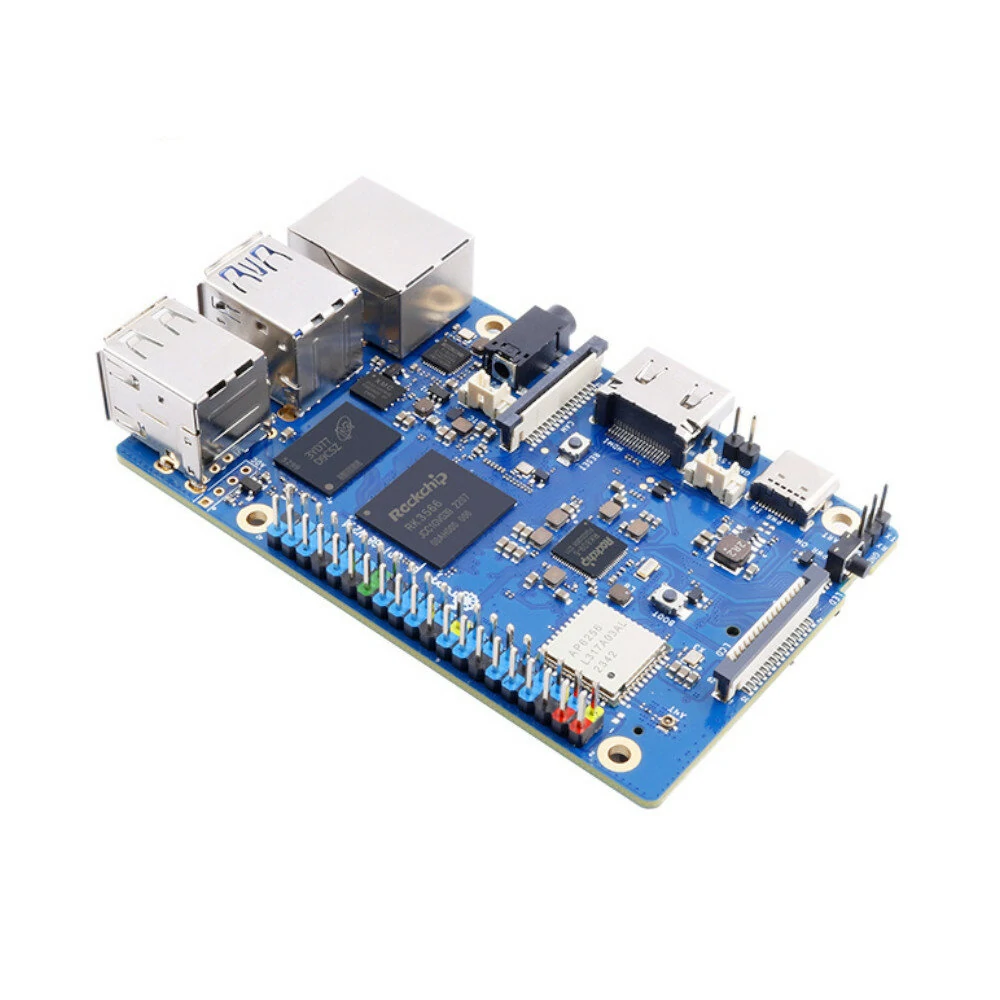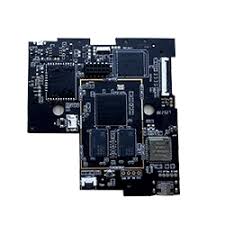
Initiate your quest the field of system customization for Android for Single Board Computers. This all-inclusive guide will equip you with the core understanding and applied strategies to efficiently build your own Android-driven SBC implementations. From realizing preliminary notions of Android development to understanding the nuanced world of SBC components, this guide will direct you to a prosperous software accomplishment.
- Scrutinize the numerous of available SBC frameworks and their particular potentials.
- Learn thoroughly essential Android engineering resources, including Android Studio, SDKs, and emulators.
- Acquire knowledge of the intricacies of preparing your SBC platform for seamless Android functionality.
Explore best practices for formulating robust and responsive Android software tailored for SBC hardware constraints.
Formulating Android Apps for SBC Platforms
Maximizing resources of a Single Board Computer (SBC) for Android application creation is an increasingly emerging approach. These compact and versatile gadgets provide a cost-effective foundation for innovation, enabling programmers to employ the capabilities of Android without the need for a traditional device. By harnessing the SBC's resources such as its processor, memory, and connectivity options, developers can design Android applications that range from simple utilities to more complex platforms. The capacity to customize the hardware and software environment further augments the flexibility of SBCs for Android development, making them a effective tool for both experts.
Advancing IoT Projects with Android Boards
For budding makers delving into the world of Internet of Things (IoT), Android dev boards present a efficient platform to bring their novel ideas to life. These compact boards, often equipped with sophisticated hardware and engaging software development kits (SDKs), provide a stable foundation for developing a wide range of IoT tools. From home automation systems to agricultural monitoring technologies, Android dev boards empower enterprises to develop cutting-edge IoT projects with facility.
- Leveraging the extensive Android ecosystem, developers can access a vast library of libraries specifically designed for IoT tools. This range of resources allows for accelerated development and supports the creation of advanced IoT solutions.
- What's more, Android dev boards often feature onboard connectivity options such as Wi-Fi, Bluetooth, and cellular, facilitating seamless transmission with other devices and cloud platforms. This connectivity capability is necessary for enabling real-time data handling and remote administration of IoT solutions.
- Ultimately, the community-driven models of Android dev boards fosters a thriving ecosystem of developers, providing ample backing for tackling any challenges encountered during the development process.
Exploring Android SBCs for Multimedia Applications
The universe of multimedia applications is constantly progressing, pushing the boundaries of what's feasible. In this dynamic landscape, Android System-on-Chips (SBCs) have emerged as a powerful strategy for developers seeking to develop innovative and engaging experiences.
These compact yet well-furnished SBCs present a rare blend of processing capacity, connectivity, and multimedia capabilities that make them fitting for a wide assortment of applications.
From high-definition video playback to immediate audio processing, Android SBCs are equipped to handle the specifications of today's multimedia landscape.
- In addition, their open-source nature enables developers to adapt hardware and software to fit specific application demands.
- The given level of flexibility facilitates for developers to go beyond the limits of multimedia innovation.
Harness Android Flexibility via Development Boards
A development board exemplified by the Raspberry Pi or a Nexus Player provides a unique opportunity to personalize your Android experience. By experimenting with the underlying software, you can adjust everything from the UI to particular utilities. This level of authority allows innovators to pioneer and produce truly unique Android setups. Whether you're wanting to optimize your device's performance, research new capabilities, or simply fulfill your curiosity, a dev board can unlock a world of prospects.
- Acquire knowledge of the fundamentals of Android development
- Craft custom ROMs and kernels
- Analyze new apps and features
- Attach your device to auxiliary equipment
Diagnosing Android SBC Challenges
When working with Android development on Single Board Computers (SBCs), you might encounter a variety of challenges. These can range from simple configuration errors to complex software bugs. Effective debugging and troubleshooting are crucial for identifying the root cause of these problems and restoring your Android environment to full functionality. Deploy the vast resources available online, such as forums and documentation, to gain insights into common issues faced by other developers in similar setups.
Start by carefully reviewing your error logs for any error messages or warnings that might provide clues about the problem. Use a meticulous logging strategy within your Android application to capture relevant information during runtime. This can help pinpoint specific areas where errors are occurring. Don't hesitate to probe different configurations and settings to see how they affect the behavior of your system.
- Allocate time in understanding the hardware capabilities of your SBC, as limitations in processing power or memory can contribute to Android performance issues.
- Design a strong understanding of the Android SDK and its components to effectively debug your applications.
- Stay updated with the latest versions of both Android and your SBC's firmware, as these often include bug fixes and performance improvements.
Enhancing SBC Android Efficiency
When running Android-based embedded computing platforms , Single-Board Computers, maximizing output is paramount. To achieve this, developers and engineers can leverage a variety of procedures. This involves carefully adjusting software and hardware components to confirm seamless behavior. Key areas for refinement include hardware allocation, power consumption, network connectivity, and application execution.
- Targeting real-time execution is fundamental for applications that demand immediate results.
- Leveraging lightweight libraries can considerably reduce memory demand, thereby advancing overall responsiveness.
Regularly upgrading the Android operating system and tools is vital for addressing security weaknesses and obtaining functionality refinements.
Ensuring Security in Android SBCs
Securing your Android systems against threats is paramount. Employing sound security best practices for your Android System-on-a-Chip (SBC) deployment can significantly mitigate risks. Regularly update your SBC's software to address gaps. Introduce robust access policies to govern user permissions and network links. Conduct routine security assessments to identify potential pitfalls and install necessary fixes.
- Inform your users about common security threats and best practices for protecting their devices.
- Secure sensitive data at rest and in transit using strong techniques.
By adhering to these best practices, you can create a more secure environment for your Android SBC.
Utilizing Cutting-Edge Android SBC Technologies
The world of embedded Electronics (SBCs) provides a compelling platform for developing progressive Android applications. By merging the power of Android with the unique capabilities of SBCs, developers can create multi-functional solutions across diverse markets. This approach offers exceptional flexibility and customization options, supporting the development of tailored applications that cater to specific conditions. Whether it's for manufacturing control, SBCs coupled with Android development open up a diverse range of possibilities.
- Utilizing the low-power nature of SBCs for resource-constrained environments.
- Building Android applications with instantaneous responsiveness for time-sensitive tasks.
- Integrating Android's user interface capabilities with custom hardware peripherals for a smooth experience.
The combination of Android and SBCs empowers developers to push the thresholds of innovation, generating transformative applications that reshape various fields.
Dominance of SBCs in Android Projects
The market of Android development is rapidly evolving, with Single Board Computers (SBCs) emerging as a prominent force. These compact and versatile machines offer developers a powerful platform for experimentation, prototyping, and even full-scale application deployment. With their affordability, expandability, and dynamic ecosystems, SBCs are poised to transform the way we create Android applications. Engineers are enthusiastically embracing this advanced paradigm, unlocking a world of possibilities for creating immersive user experiences.
From embedded platforms to automated devices, SBCs provide the perfect platform for a wide range of Android projects. Employing the power of open-source software and hardware, developers can design innovative solutions that resolve real-world challenges.
Practical Android SBC Applications
Android Single Board Computers (SBCs) are effective little machines that can be used to develop a wide range of assignments. Given you're a beginner, there are plenty of interesting project ideas to explore. One mainstream category is home automation, where you can use an Android SBC to control your appliances. You could also build a personalized media center, stream content on a larger screen, or even engage in robotics and coding.
- Some Some Numerous Multiple
- Several other ideas include creating educational toys, assembling wearable apparatus, or even engaging with open-source platforms. The possibilities are truly endless.
